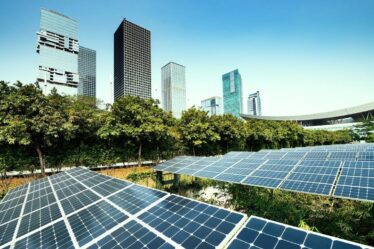
Playgrounds are more than just places for children to have fun; they’re also spaces where kids learn, socialize, and develop essential skills. However, safety is paramount in these environments, and ensuring that children can play without the risk of serious injury is a top priority for parents, educators, and playground designers alike. One significant advancement in playground safety technology is the use of rubberized surfaces. In this article, we delve into the science behind rubberized playground surfaces, exploring how they work, their benefits, and why they’re becoming increasingly popular.
Need Of Rubberized Playground Surfaces
Rubberized playground surfaces are made from a combination of recycled rubber and polyurethane binders. This mix makes a strong, flexible cloth that can handle the roughness of outdoor play while still being soft and cushioned for landing. The rubber granules used in these surfaces are typically sourced from recycled tires, making them an environmentally friendly option.
The installation process involves mixing the rubber granules with the polyurethane binder and pouring the mixture onto the designated area. Once applied, the surface is leveled and allowed to cure, resulting in a seamless and resilient playground flooring solution.
The Science of Impact Absorption
One of the primary functions of rubberized playground surface is impact absorption. When children run, jump, or fall on traditional hard surfaces like concrete or asphalt, the impact forces exerted on their bodies can lead to injuries such as cuts, bruises, or even broken bones. Rubberized surfaces, however, excel at absorbing these impact forces, reducing the risk of injury significantly.
The key to this impact absorption lies in the elasticity and resilience of the rubber material. When a child lands on a rubberized surface, the rubber granules compress under the weight and force of their impact, absorbing much of the energy generated. This reduces the amount of force transferred to the child’s body, minimizing the risk of injury.
Furthermore, the flexibility of rubberized surfaces allows them to conform to the contours of the ground beneath, providing consistent shock absorption across the entire playground area. This uniformity is crucial for ensuring that children are protected regardless of where they land or play.
Slip Resistance and Traction
In addition to impact absorption, rubberized playground surfaces also offer excellent slip resistance and traction. This is particularly important in outdoor playgrounds where surfaces may become wet or slippery due to rain or moisture. The textured surface of rubberized flooring provides increased grip for children’s shoes, reducing the likelihood of slips and falls.
Moreover, rubberized surfaces maintain their slip resistance even as they age, thanks to the durable nature of the material. This ensures that playgrounds remain safe and accessible for children over time, with minimal maintenance required to uphold safety standards.
Durability and Longevity
Rubberized playground surfaces are renowned for their durability and longevity. In contrast to traditional materials like concrete or wood, rubbery surfaces don’t wear down easily and don’t change color when they’re exposed to the weather. This makes them an ideal choice for outdoor playgrounds, where they can withstand heavy use and remain in excellent condition for years to come.
Furthermore, the resilience of rubberized surfaces extends to their ability to resist damage from vandalism or misuse. Unlike other materials that may chip, crack, or splinter when subjected to deliberate or accidental damage, rubberized surfaces maintain their integrity, ensuring continued safety for children.
Environmental Benefits
In addition to making playgrounds safer and lasting longer, rubberized floors are also very good for the environment. These surfaces help keep trash out of dumps by using recycled rubber materials. This also lowers the need for making new rubber. This helps with efforts to be more sustainable and encourages an eco-friendlier way of designing and building playgrounds.
Rubberized surfaces also last a long time, so they don’t need to be replaced as often. This makes them even better for the environment over time. This is in line with the ideas behind sustainable development, which stress how important it is to keep resources from being wasted and make as little trash as possible.
Conclusion
Rubberized playground surfaces represent a significant advancement in playground safety technology, offering superior impact absorption, slip resistance, and durability compared to traditional materials. By harnessing the science behind rubber elasticity and resilience, these surfaces create safe spaces where children can play and explore without the fear of serious injury.
Also, using recycled rubber materials is good for the environment and makes rubberized playground surfaces last longer. This makes them a good choice for playground planners and stakeholders who care about the environment.
As the importance of safe and inclusive play environments continues to gain recognition, rubberized playground surfaces are poised to play a central role in shaping the future of playground design and construction. By prioritizing safety, durability, and sustainability, these surfaces pave the way for creating safe spaces where children can thrive and grow.


